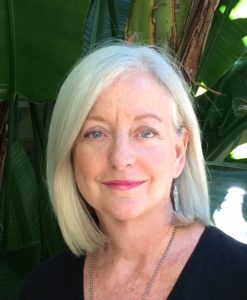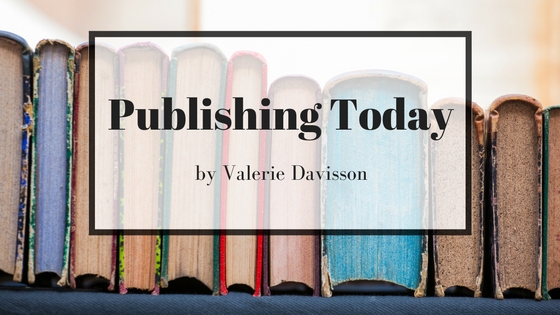by Valerie Davisson
Publishing today is nothing like it was ten years, or even ten minutes ago. Due to market changes in their industry, major publishing houses are much more risk averse these days. No more champagne and caviar book tours. Profit margins are tight. They can’t afford the luxury of carrying new authors until they develop and mature. They want you to be able to make money out of the gate.
So, what are the steps to publication and how do you decide what route is best for you? It helps to break it down by who the major players are in this process.
The Author
You get that first manuscript together, get feedback from Beta Readers, rewrite until you’re happy with it. Lovely, thick stack of paper. The End. Nope, just the beginning….
The Publisher
This is the messy middle (where everything seems to wind up, right?) These are the steps a traditional publisher completes for the author. If you use a hybrid publishing model, you farm out the tasks you either don’t know how to do, don’t have time to do, or don’t want to do. It’s a trade off. You have to decide what your resources are and how to use them.
Editor
In my opinion, the most critical step. Whether you’re going to self-publish or present to agents or small presses directly, you need a professional editor. Assessments of your manuscript (to see if there are any major structural flaws) cost ~$70 an hour. A good copy editing runs around $1,500, but ranges widely. Deeper, content editing runs into the thousands, and if you need a book doctor, forget about it!
Ask for a sample edit and choose someone with experience in your genre before forking over that kind of money. Some people skip this step and submit directly to agents and publishers, or self-publish. Up to you. Last year, over a million new ISBN #s were purchased. There’s a lot of competition out there – agents and publishers don’t want to waste their time with a rough manuscript. The best way to find these professionals is to research them online, attend conferences, get recommendations from other authors who have used their services.
Interior Design
InDesign is hands down best program for laying out your manuscript for any format, Ebooks to print. You either have to learn this program, and be at least somewhat artistically inclined, or find someone who is. It involves fonts, drop caps, margins, etc. all done to meet specific requirements of various formats. There are a few other programs out there that can create simple designs, including Scrivener, but if you have any pictures or tables, or want something a little fancier, InDesign is the way to go.
Cover Design
You need a professionally produced cover. Period. You can get a good cover for a few hundred dollars.
Printer
Editing and Printing are the two most expensive tasks, and one a lot of publishing service packages do not include for that very reason. Your choices are Print On Demand or do a print run and try to get into major retail outlets. Get references.
Distributor
SPU, Ingram, PPG. These companies warehouse, fulfill, and ACTIVELY sell your book into every marketplace (online, brick and mortar, wholesalers). Distributors market you to the industry, you market to the consumer. They can get your books into the retail outlets, but you still have to market – to get consumers to buy your book. They carry only their own publisher clients, exclusive because this is still a returnable industry – they have to accept all returns – so can’t have you working with more than one distributor-negates profitability. You can be a publisher with one title, your own, but it’s tough to get in with a distributor – they like to see sales in the thousands and a good platform before accepting you.
I was lucky enough to get on with one with my non-fiction title, Saturday Salon: Bringing Conversation and Community Back Into Our Lives, and the Distributor sold it into Barnes and Noble stores, but the responsibility was still mine to market it. I found I did just as well if not better selling it myself, keeping more of the profit. Each player takes a cut. You have to decide how many layers you need between the cash someone plunks down to buy your book, and you, the author.
Fulfillment
If you are not a publisher, or are not well-known enough a distributor wants to take a risk on carrying your book in their catalogue, you can always go with a Fulfillment house. This is a service distributors provide, or you can contract with someone just to do fulfillment for you. Warehouse, ship, bill, collect, handle returns. Fulfillment House posts on retailers sites, and will warehouse their books – but they do not have a sales force- that sells into the buyers.
Wholesaler
Traditionally, Ingram or Baker & Taylor. Wholesalers work on behalf of the customer – most books, best price. These companies all have branched out. Ingram, for example, now has arms for all the services self-publishing authors need.
Retailer
Anyplace that sells books: grocery store, brick-and-mortar, online, gift shops, libraries. One of the most overlooked markets is audio. Audio versions of the first two novels in my Mystery/Thriller series, Shattered: Logan Book 1 and Forest Park: Logan Book 2, tripled sales of both titles. Many narrators accept royalty splits. Check out ACX.
No one can predict where publishing will be in the next few years, but it will always include these basic steps. So, stop reading this blog post and get back to writing. You’ve got a book to publish! And when you hit the big time, I expect to be invited to share some of that caviar and champagne.
***

Valerie Davisson, Author
A self-admitted book addict, Valerie Davisson was the kid with the flashlight under her pillow, reading in bed long after lights out. Growing up in different countries led to degrees in Cultural Anthropology, Teaching, and a pervasive interest in people and how we navigate our world. Writing is her Passion! She is the author of Saturday Salon: Bringing Conversation and Community Back Into Our Lives, and the new Mystery/Thriller series featuring strong, female protagonist Logan McKenna. You can find her on her website at www.ValerieDavisson.com.


